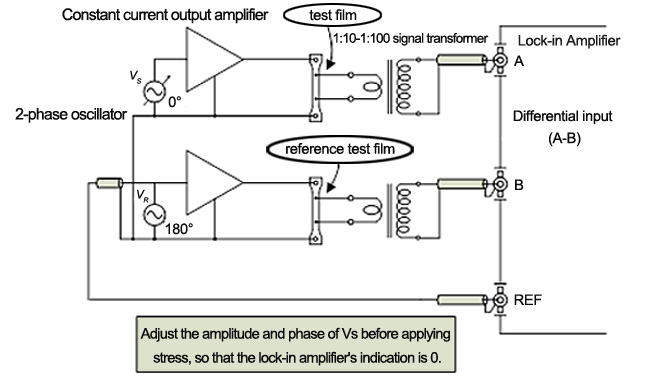When evaluating the strength of metal materials, a tensile test is required. In order to detect tiny cracks or shape changes in metal, the AC resistance of the sample can be measured (called the AC potential method). However, because it is a metal, the resistance value is very low, and the generated voltage is also very weak, so a lock-in amplifier is required. Figure 1 is a block diagram of the measurement. Tensile test-by comparing with the reference sample when no stress is applied, errors caused by temperature changes and other factors can be avoided, and the initial small cracks or changes in shape can be detected.
Figure 1 Tension test of metallic materials (AC potential method)
Since the output impedance of the signal is very low, a transformer can be used to boost the S/N. Since the transformer can insulate the ground ring, it can prevent the common mode mixing of the reference signal. It is necessary to adjust the current and phase of the reference sample before applying stress, and then start the measurement after adjusting the output of the lock-in amplifier to 0.
Related products:
SE1022D DSP lock-in amplifier (1 mHz to 102 kHz, dual channel)
SE1022 DSP lock-in amplifier (1 mHz to 102 kHz)
SE2031 DSP lock-in amplifier (1 mHz to 3 MHz)
SE1201 DSP lock-in amplifier (50 mHz to 120 kHz)




